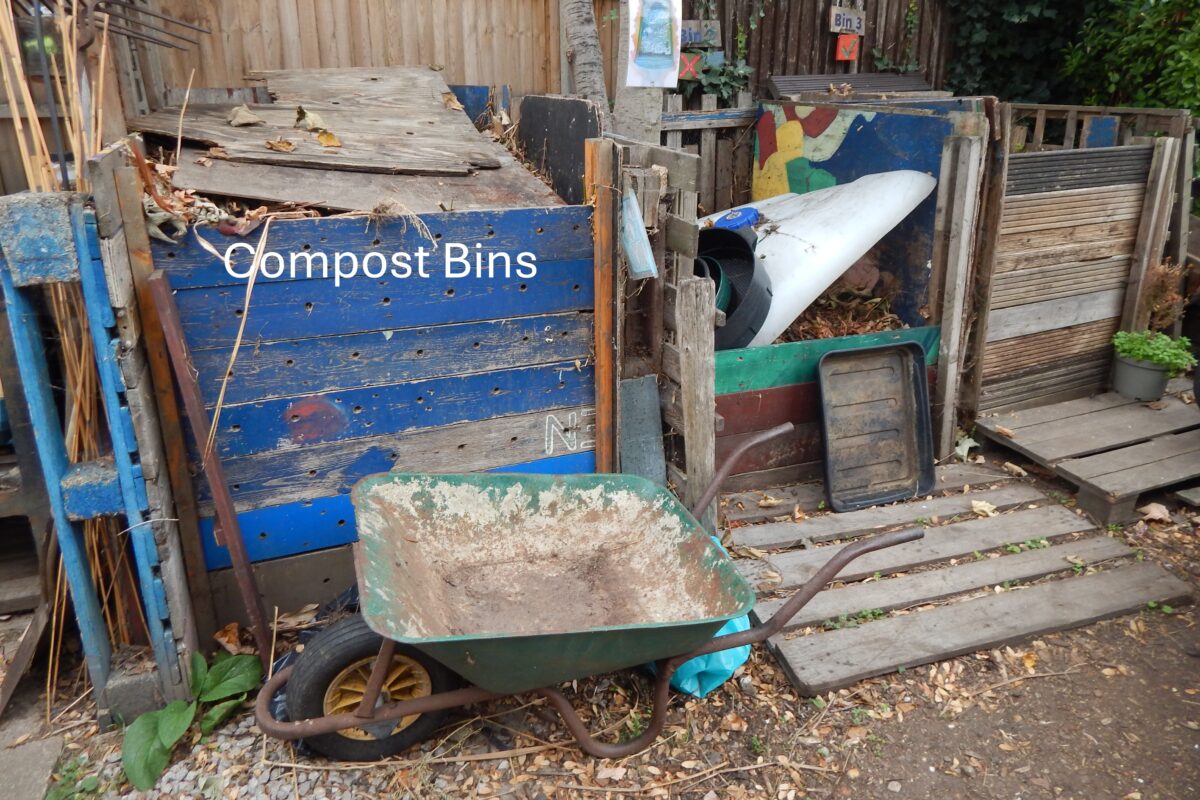Newham Council very soon will be implementing its waste food plan. It should begin for some households before the end of the year, and for all households in 2026. It is government directed.
We will all be given what they call a caddy, which is a 5 litre container with a lid. Most people will keep it in their kitchen. It is about the size of a bucket. Into it goes waste food. This means any waste food, apart from liquids like milk or oil. It includes cooked food and raw, also meat and fish as well as fruit and vegetables and their peel. The caddy is emptied into a 23 litre outside bin which is collected once a week, on the same day as recycled waste is collected. But there will be separate vehicles to collect the food waste. The outside bin has a secure lid so it is not raided by foxes, squirrels or rats.
The waste food vehicle ferries its collection to a large anaerobic digester which will take the waste from the whole area. An anaerobic digester works within an oxygen free environment, converting organic matter into methane gas by using microorganisms to break down organic waste, producing biogas and a nutrient-rich remnant which can be used as a fertiliser. It is a complicated process, involving breaking down vegetable and animal proteins, cellulose (which makes up plant walls) and fats. The resultant biogas will either be used at the plant, or fed into the general gas stream. What’s left over, after the gas is taken off (the digestate) will be used as fertiliser on farms as it is rich in nitrogen and phosphates.
With the small caddy, most conveniently kept in the kitchen, the Council will initially provide plastic bags. When full the caddy is emptied into the outside 23 litre bin. No need to take off the plastic bags, as bags and contents will be taken away when the food waste bin is emptied into the truck. Once your Council supply of bags runs out, you can buy bags, organic or general bin bags, or use newspaper. I am told the bags are stripped off the waste at the plant. I find that puzzling as there will be a mixture of organic and non organic bags, so quite how the system distinguishes I don’t know. Perhaps it lets the pile compost and then strips out the non compostable plastic.
I was part of a focus group for the Council at Canning Town Library, which went through the letter and leaflet which will be sent round the borough to all households, explaining how the system will work. Mostly I thought the literature pretty good. We made suggestions how they might be made clearer. Though focus groups often argue, and can make suggestions which are muddling.
You may well have noted, in this blog, the difference between this waste food collecting and composting. Composting, which many of us do in our gardens and we do in the community garden, generally does not allow cooked food, fish or meat, just raw vegetable matter, whereas this recycling allows all food waste apart from liquids like milk and oil. So meat, cooked and raw, ditto fish, any other cooked food, and vegetable waste are all taken to the anaerobic digester. This will be especially useful for those without compost bins.
I note they take teabags. Most teabags have for the sealant an organic plastic glue, polyactic acid, which will not break down in home composters, but large anaerobic digesters do break it down. Another benefit for the collection.
I hope the food waste recycling is widely used. I doubt it will encourage us to waste less food but it would mean waste food doesn’t go into landfill where it breaks down to methane, which is a greenhouse gas 30 times more powerful than carbon dioxide. In the anaerobic digester methane is formed too, but it is collected and used as a biofuel.


Comments 2
Great read and brilliant to know this is coming to Newham.
You’ve described the process brilliantly and accessibly. Well done. This should help to encourage participation.